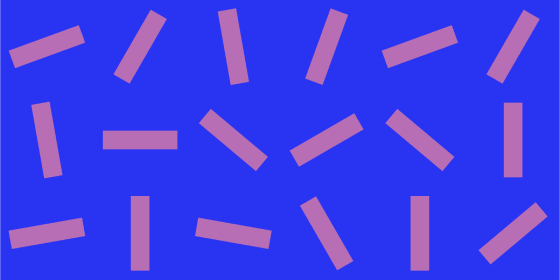
Summary: Using timelapse microscopy images of the human fungal pathogen Candida albicans, this challenge asks participants to identify transitions between cellular states — from filamentous (hyphal) biofilm growth to the release of yeast-form cells (dispersal). Ground truth will include hand-annotated and fluorescently tagged images, and participants will design image-based workflows that quantify both biofilm development and the timing and characteristics of dispersal. Bonus points for rich, interpretable outputs — such as tracking individual cells, quantifying biofilm structure, or modeling post-dispersal growth.
Method areas: Image classification or regression, texture analysis, segmentation, image-based quantification, temporal tracking, timelapse microscopy, custom metrics for biological events.
Prerequisites: Familiarity with image analysis tools is recommended. You don’t need prior experience in cell biology or fungal pathogens, but comfort working with low-resolution image data and designing custom evaluation workflows will be helpful.
- Description & Goal
- Data
- Prerequisites
- Resources for Getting Started
- Launch Date & Data Release
- Contact
Description
Candida albicans is a prevalent, generally commensal member of the human mycobiome carried by most people their entire lives. Simultaneously, C. albicans is a major opportunistic pathogen – in immunocompetent individuals this generally manifests in vulvovaginal (yeast infections) and cutaneous infections while in immunocompromised people, C. albicans can also cause superficial oral infections (thrush) or internal solid organ or bloodstream infections.
The ability to switch between cellular states with distinct metabolic signatures, adhesins, and morphologies enables Candida albicans to invade a variety of host tissues while evading the immune system as well as common treatments. Cell state transition has also been linked to commensal host immune and metabolic regulation. The cellular states we will primarily focus on are yeast-form (round) cells and hyphal (filamentous) cells. Understanding these cell transitions is crucial, but dispersal–the process by which hyphal dominated biofilms generate planktonic yeast-form cells–remains poorly understood. By modeling the regulatory pathways controlling dispersal, we hope to uncover potential targets for treatment to encourage commensalism over pathogenesis; however, quantification of these transitions is challenging by conventional methods.
You will design methods to address this problem — identifying and quantifying cellular state transitions in timelapse microscopy images. On the most basic level, this could be something akin to texture analysis or image classification estimating the quantity of dispersed cells or biofilm per slide in the timelapse. A better solution would identify individual dispersed cells and hyphae enabling analysis of within group heterogeneity such as hyphal length, branching, and twisting or dispersed cell size, clumping, or elongation. An even better solution would additionally track dispersed cells, enabling analysis of post-dispersal growth.
Evaluation
Submissions are evaluated on accuracy and richness of information:
Minimal model:
Initiation of dispersal:
0-2 points are awarded for accuracy in identifying the slide in which dispersal begins
Biofilm growth:
0-2 points are awarded for accuracy in creating a growth curve of the biofilm over time
Dispersed cell quantification:
0-2 points are awarded for accuracy in quantifying the number of dispersed cells per slide
Icing on the cake:
Dispersed cell characterization:
0-.5 points are awarded for identification of individual dispersed cells with an additional 0-.5 points for their characterization (cell size, clumping, or elongation, etc)
Biofilm characterization:
0-1 points are awarded for the characterization of yeast form and hyphal cells within biofilms (distribution of yeast-form associated cells along hyphae, length, branching, and twistiness of hyphae, etc)
Cell tracking:
0-1 points are awarded for tracking individual dispersed or biofilm associated cells throughout the timelapse, enabling quantification of their growth and development
The data and challenge will be available at the following URL after the launch date on Sept. 11, 2025: kaggle.com/competitions/cellular-state-image-analysis
Required
- Version Control with GitHub Desktop: All hackathon attendees must know how to work in Git/GitHub. Click the link if you need a quick refresher (1 hour tutorial) before the hackathon kicks off in September!
-
Python: Most teams will use Python for building their image analysis pipeline. You can use another language if your team agrees and you’re comfortable with it.
Helpful but not strictly required
-
Basic Image Processing or Computer Vision: Familiarity with tasks like image classification, segmentation, or object detection will be useful.
-
Deep Learning Libraries: Experience with PyTorch, TensorFlow, or Keras will help if you plan to train or fine-tune a model.
No prior knowledge of the subject matter is required — this is an image-based modeling challenge.
-
Intro to Image Classification and Segmentation (Kaggle Learn): Brush up on core computer vision tasks like classifying or segmenting objects in images.
-
Image Processing with OpenCV and scikit-image: Learn how to load, manipulate, and analyze images using Python libraries.
-
Convolutional Neural Networks (CS231n): Review how CNNs extract features from image data for classification and detection.
-
Transfer Learning with Vision Models (PyTorch): Use pretrained models like ResNet or EfficientNet to jumpstart your workflow.
-
Albumentations: Speed up experimentation with fast, flexible image augmentations.
-
U-Net for Biomedical Segmentation: A popular architecture for identifying and labeling structures in scientific images.
-
Working with TIFFs and Image Stacks (Pillow Docs): Use
Pillow,tifffile, orimageioto handle common multi-frame image formats. -
Recursion Cellular Image Classification (Kaggle Challenge): A prior image analysis competition involving cell state prediction.
-
ML+X Nexus: Found a helpful resource during your project? Share it with others through our open-source ML knowledge base!
The data and challenge will be available at the following URL after the launch date on Sept. 11, 2025: kaggle.com/competitions/cellular-state-image-analysis
If you have any questions about participating, please contact the challenge organizer: Eli Cytrynbaum (cytrynbaum@wisc.edu)